1.
Mycena metata.
-
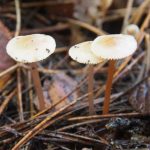
- 1. Mycena metata
-
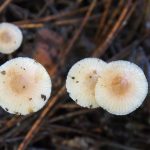
- 1. Mycena metata
-
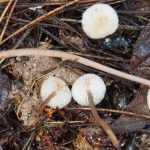
- 1. Mycena metata
-
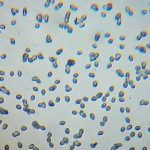
- 1. Mycena metata
Growing in pine needles. Small group. Cap 1-2.2cm, stem 5-9cm. Slight musty smell. Rather shaky identification based on small spore size, but could easily be another Mycena. ID is wild guess. Sporeprint White. Spores 5-7.5µ x 4-5µ.
2.
Clouded Funnel (
Clitocybe nebularis).
-
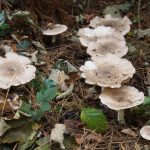
- 2. Clouded Funnel
-
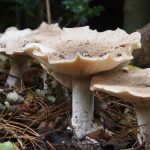
- 2. Clouded Funnel
-
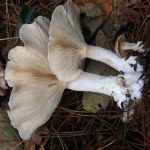
- 2. Clouded Funnel
-
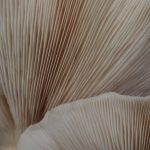
- 2. Clouded Funnel
-
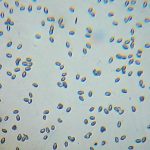
- 2. Clouded Funnel
Growing near pine tree in mixed wood. Troop of a dozen. Cap 8-18cm, stem up to 10cm. Sweet smell. Sporeprint White. Spores 5.5-7.5µ x 3.5-4.5µ.
3.
Wood Woollyfoot (
Collybia peronata).
-
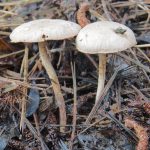
- 3. Wood Woollyfoot
-
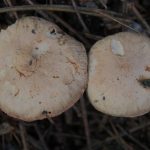
- 3. Wood Woollyfoot
-
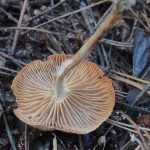
- 3. Wood Woollyfoot
-
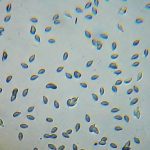
- 3. Wood Woollyfoot
Growing in pine needles. Three. Cap 3.5-5cm, stem 7cm. Slight unpleasant smell. Tough stem. Sporeprint White. Spores 7-9.5µ x 4-5µ.
4.
Lepista sordida.
-
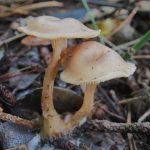
- 4. Lepista sordida
-
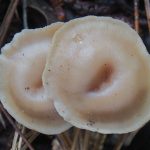
- 4. Lepista sordida
-
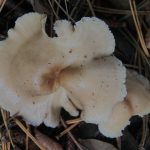
- 4. Lepista sordida
-
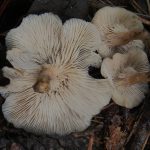
- 4. Lepista sordida
-
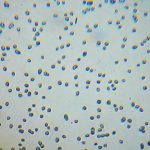
- 4. Lepista sordida
Growing in pine needles. Small group of four. Cap 4-8cm, stem up to 6cm. Little smell, perhaps earthy. Look like small lumps of dough! Stems flattened and hollow. Tricky to identify this. It's common but I've not noticed it before and the book says it's very variable in appearance. The small round spores make it likely. ID is fairly likely. Sporeprint White. Spores 3.5-5.5µ x 3-4.5µ.
5.
Yellow Stainer (
Agaricus xanthodermus).
-
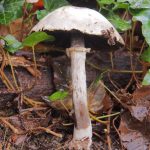
- 5. Yellow Stainer
-
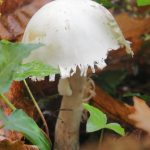
- 5. Yellow Stainer
-
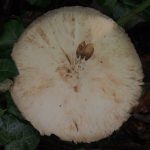
- 5. Yellow Stainer
-
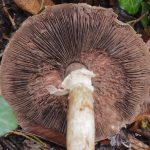
- 5. Yellow Stainer
-
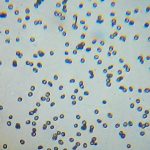
- 5. Yellow Stainer
-
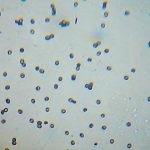
- 5. Yellow Stainer
Growing in deciduous wood through leaf litter. Several scattered around. Cap 9-14cm, stem 10-14cm. No smell. Foolishly I didn't cut the stem. If it turns yellow at the base then it's a Yellow Stainer, although I have before found old ones that didn't go yellow. ID is very likely. Sporeprint Dark chocolate brown. Spores 4.5-6.5µ x 3.5-5µ.
6. Unidentified.
-
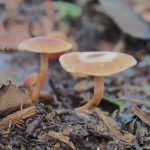
- 6. Unidentified
-
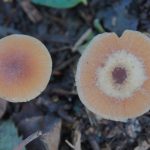
- 6. Unidentified
-
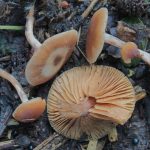
- 6. Unidentified
-
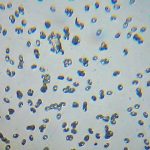
- 6. Unidentified
Growing in leaf litter. Small group. Cap up to 3.5cm, stem up to 3cm. Slight sweet smell, perhaps putty like. Frustrated that I can't identify this! Sporeprint Pinkish pale tan. Spores 6.5-7.5µ x 4-5.5µ.
7.
The Blusher (
Amanita rubescens).
-
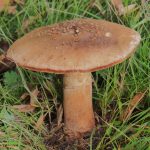
- 7. The Blusher
-
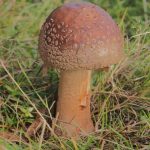
- 7. The Blusher
-
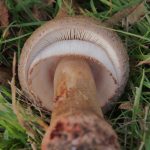
- 7. The Blusher
-
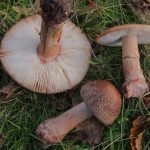
- 7. The Blusher
-
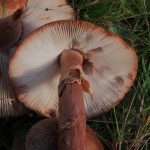
- 7. The Blusher
-
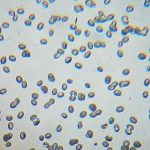
- 7. The Blusher
Growing in grassy field near beech, oak, hawthorn. Lots trooping. Cap 6-11cm, stem up to 9cm. No smell. Flimsy ring soon disappears. Bulb at stem base. Sporeprint White. Spores 6.5-9µ x 3.5-6.5µ.


































